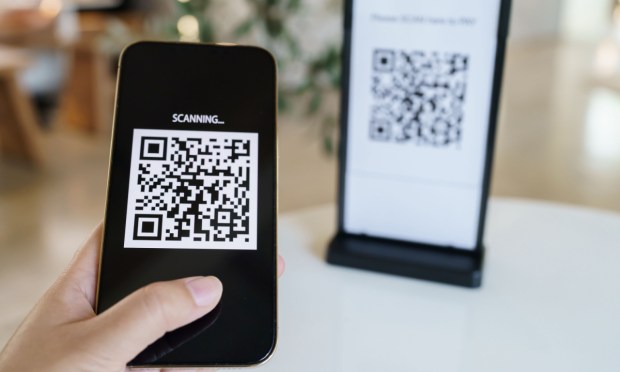
No doubt you’ve gotten them in the mail: QR codes from local and national merchants. The codes contain a wealth of information, and offer to unlock special promotions and deals with a quick scan from a smartphone.
And this past weekend, during the Thanksgiving holiday, we got a reminder of how the codes can be embedded into streaming, real-time interactions. Amazon’s “Black Friday” football game also featured in-game shopping opportunities, where QR codes were shown on screen during commercials. Scanning those codes whisked users to Amazon’s own site or to merchants’ websites.
We might term it an embedded finance opportunity, bringing new meaning to the term “couch surfing,” and QR may become shorthand for creating a doorway to deals. Amazon’s Exhibit A here was a Nintendo Switch bundle, which shoppers could access via scannable codes early into the game, and Apple Watches were a staple later on during a later quarter. Scanning the codes brought consumers to the Amazon site, and face to face with the special, presumably one-off, deals touted during the game.
For the merchants — whether they’re on a platform like Amazon’s or not, and no matter whether or not the code is tied to a multi-media experience — the QR codes are an additional conduit of customer outreach.
The QR code can be tied to individual offers, personalized ones that take into account a customer or household’s previous buying activity.
For the codes themselves, there’s a bit of renaissance underway. QR codes trace their roots to the mid 1990s. But with the tailwind of the pandemic, and the rise of contactless means of making contact (especially in-store), the codes have been primed for a much wider utilization in mainstream commerce.
PYMNTS’ own data shows some significant use from a standing start. PYMNTS Intelligence has estimated that in brick-and-mortar settings during Black Friday, consumers used the option for 9% of transactions done in the aisles and the checkout lines — a huge jump from infinitesimal levels three years ago. The use of QR codes by U.S. consumers shows just how global the appeal has become; PYMNTS noted in the midst of the pandemic that the most significant growth in QR adoption was in Asia.
Here in the states, there are other channels using in-store QR codes to connect loyalty and rewards to individual customers’ preferences and profiles. Earlier this month, we spotlighted that restaurants are finding success with those efforts. In one example, Restaurant Brands International has said its Tim Hortons brand is using QR codes to drive in-store adoption of its loyalty program.
The company has estimated that the program has improved customer satisfaction by 7%, and that there’s been a 10% boost in drive-thru speed of service.
Separately, Hallmark and Venmo have teamed up to let users gift payments inside of actual cards — users select the amount they want to give, and write a personalized message. When the recipient gets the card, they scan the QR code to access their funds.